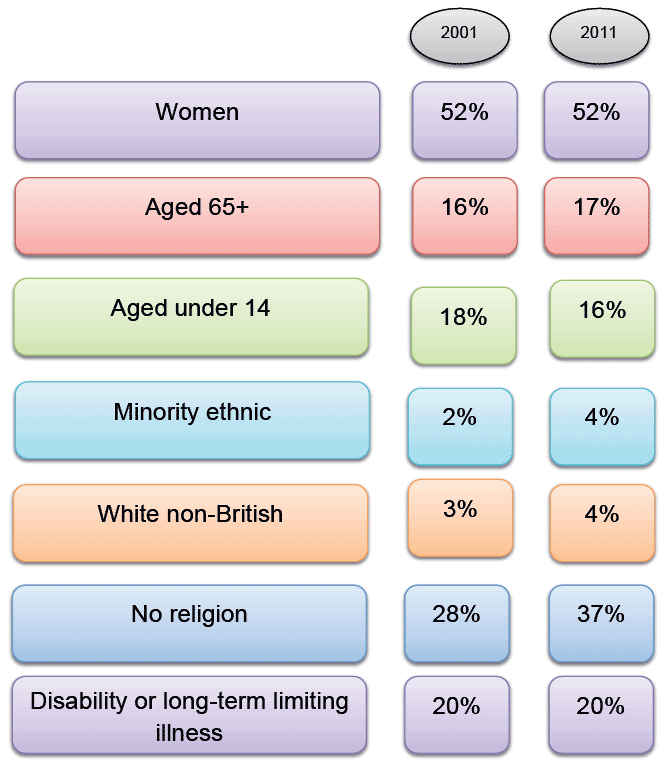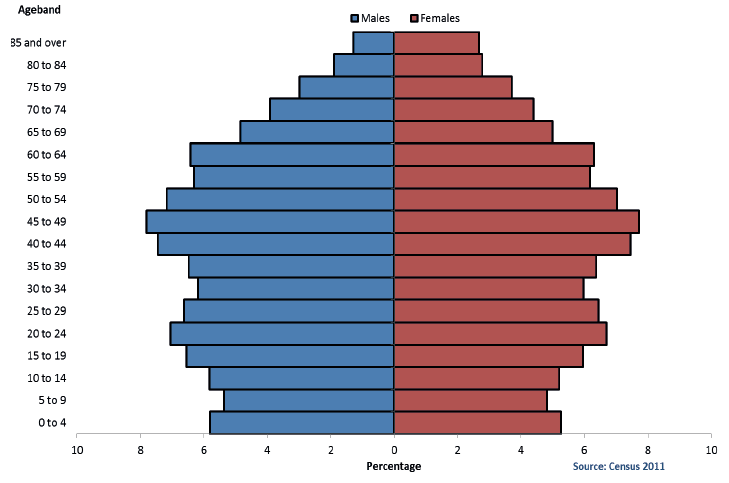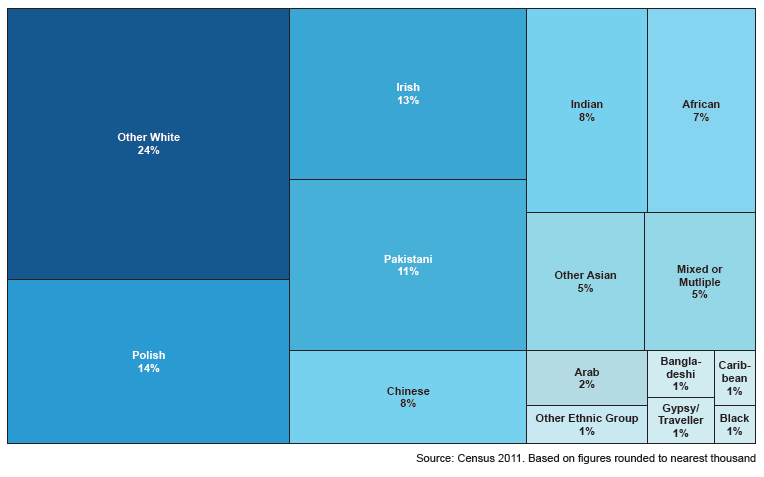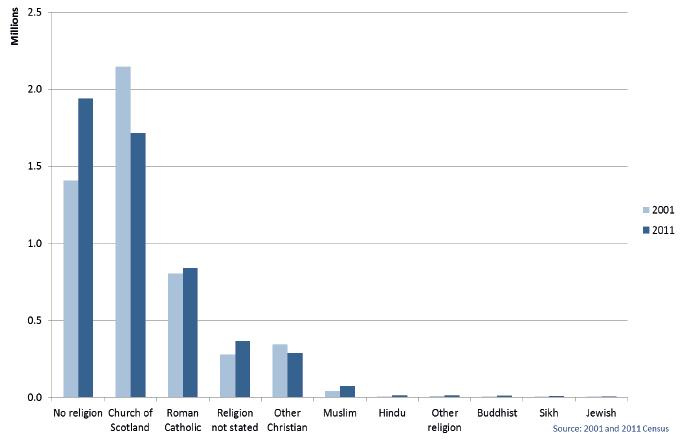Equality Outcomes and Mainstreaming Report 2015
Update on Scottish Government's aims to incorporate equality across its activities and deliver on equality outcomes set in April 2013.
Introduction
Changing Scotland - Our People
Scotland is an increasingly diverse country. Promoting equality of opportunity matters if we are to enable all of Scotland to flourish and our people to fulfil their potential. 2011 Census data have become available since our last report, shedding new light on how Scotland's diverse population is changing: [1],[2]
Equality characteristics of Scotland's population (Source: Census data) [3]

Age
The population aged 65 and over increased by 10.6% between 2001 and 2011 - from 804,900 to 890,000.
Race and ethnicity
We have become a more ethnically diverse people in the decade to 2011, with a minority ethnic population of 4% and a further 4% identifying as white non-British ethnicity. This compares to 2% and 3%, respectively, in 2001. Within this period Scotland's 'Asian' population doubled (an increase of 69,000 people), and our 'African, Caribbean or Black' population increased more than fourfold (by 28,000 people).
Religion or belief
Scotland remains a place of diverse religious and faith communities, although those having no religion increased from 27.8% of the population in 2001 to 36.7% in 2011.
Other characteristics
Other characteristics have shown less change since 2001. For example, there are still slightly more women (51.5% in 2011) than men. And the percentage of the population with a long-term, activity-limiting health problem or disability was 19.6% in 2011, compared with 20.3% in 2001. The incidence of long-term health problem or disability increases with age.
There remain no official data on numbers of people who are lesbian, gay, bisexual, transgender or intersex - although various estimates have been made. For example, Stonewall Scotland suggest an LGBT figure of 5-7% [4] , while the Scottish Household Survey ( SHS) suggests an LGB population of around 1.0% [5] (The question on self-identified sexual orientation was introduced to the SHS in 2011 to provide statistics to underpin the equality monitoring responsibilities of public sector organisations and to assess the disadvantage or relative discrimination experienced by the lesbian, gay and bisexual population. Despite this positive step in collecting such information, it is thought that the figures are likely to under-report the percentage of lesbian, gay or bisexual people for a number of reasons).
Scotland's age profile, 2011
Population Pyramid: All People, Scotland 2011

Relative size of ethnic groups in Scotland 2011

Religion in Scotland, 2001 and 2011

Long-term Health Problem or Disbility by Age, All People, Scotland 2011

Contact
Email: Mainstreaming Equality Team, MainstreamingEquality@scotland.gsi.gov.uk
Phone: 0300 244 4000 – Central Enquiry Unit
The Scottish Government
St Andrew's House
Regent Road
Edinburgh
EH1 3DG
There is a problem
Thanks for your feedback